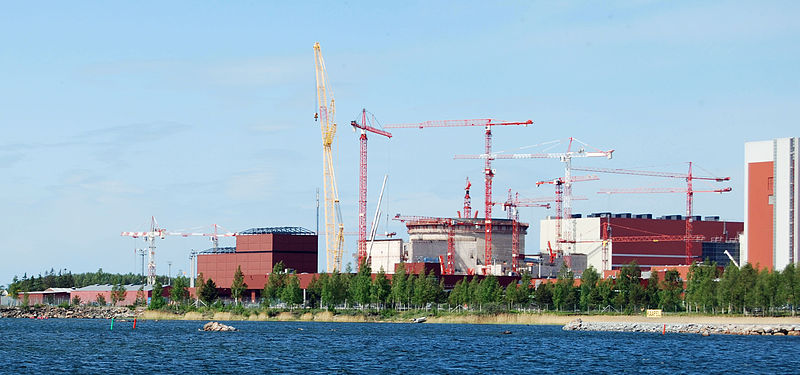The nonresidential building market was hamstrung by weather-related delays during the first part of the 2014, but conditions improved dramatically throughout the rest of the year to finish with greater than anticipated spending levels. The commercial construction sector is now looking at double-digit increases in 2015, led by vigorous levels of demand for hotels and office buildings.
The American Institute of Architects’ (AIA) semi-annual Consensus Construction Forecast, a survey of the nation’s leading construction forecasters, is projecting that spending will see a 7.7% increase in 2015, with next year’s projection nudging up to 8.2%.
VIDEO: Q1 2015 Economic Forecast
“This is the first time since the Great Recession that every major building category is projected to see increases in spending,” said AIA Chief Economist, Kermit Baker, PhD, Hon. AIA. “But by far, the most significant driver that will fuel greater expansion in the marketplace is the revival in the institutional sector, especially with growing demand for new healthcare and education facilities, which alone traditionally account for a third of spending on new building construction.”
Baker continued, “The overall construction industry appears to be on very solid ground for the next two years. That said, uncertainties in international economies, potential labor shortages, lower energy costs, rising interest rates and construction costs all are factors that we will be watching closely to see how they may adversely impact the marketplace.”
Market Segment Consensus Growth Forecasts
Overall nonresidential building
2015: 7.7%
2016: 8.2%
Commercial/industrial
2015: 11.8%
2016: 10.4%
Hotels
2015: 15.3%
2016: 10.4%
Office buildings
2015: 12.9%
2016: 11.5%
Industrial facilities
2015: 10.5%
2016: 10.1%
Retail
2015: 10.1%
2016: 9.0%
Institutional
2015: 5.0%
2016: 5.4%
Amusement/recreation
2015: 9.1%
2016: 5.3%
Education
2015: 4.7%
2016: 5.2%
Healthcare facilities
2015: 4.7%
2016: 6.2%
Public safety
2015: 1.7%
2016: 3.6%
Religious
2015: 1.2%
2016: 3.6%
About the AIA Consensus Construction Forecast Panel
The AIA Consensus Construction Forecast Panel is conducted twice a year with the leading nonresidential construction forecasters in the United States including, McGraw Hill Construction, Wells Fargo Securities, IHS-Global Insight, Moody’s economy.com, Reed Business Information, Associated Builders & Contractors and FMI. The purpose of the Consensus Construction Forecast Panel is to project business conditions in the construction industry over the coming 12 to 18 months. The Consensus Construction Forecast Panel has been conducted for 16 years.
Related Stories
| Aug 11, 2010
Nation's first multi-story green industrial facility opens in Brooklyn
The $25 million Perry Avenue Building at Brooklyn Navy Yard is the nation's first multi-level green industrial facility and the first building in New York City to incorporate building-mounted wind turbines. The wind turbines, along with rooftop solar panels, will provide electricity for the building's lobby and common areas.
| Aug 11, 2010
AAMA leads development of BIM standard for fenestration products
The American Architectural Manufacturers Association’s newly formed BIM Task Group met during the AAMA National Fall Conference to discuss the need for an BIM standard for nonresidential fenestration products.
| Aug 11, 2010
HGA creates greener outlook with print systems from Océ
Since its founding in 1953, HGA Architects and Engineers (HGA), a full service integrated architectural and engineering firm, has operated with an unwavering belief that good design is sustainable. HGA takes its environmental responsibility seriously, both in the buildings the firm designs, its internal operations and its vendor partnerships. Therefore, when HGA decided to investigate new options for its printing and scanning needs, the firm wanted a vendor who shared its values.
| Aug 11, 2010
Report: Building codes and regulations impede progress toward uber-green buildings
The enthusiasm for super green Living Buildings continues unabated, but a key stumbling block to the growth of this highest level of green building performance is an existing set of codes and regulations. A new report by the Cascadia Region Green Building Council entitled "Code, Regulatory and Systemic Barriers Affecting Living Building Projects" presents a case for fundamental reassessment of building codes.
| Aug 11, 2010
PSA-Dewberry designing new Baltimore youth detention center
A consulting team led by PSA-Dewberry has been selected by the Maryland Department of Public Safety and Correctional Services to design the new Baltimore Youth Detention Center in downtown Baltimore, Md. The $80-million facility will accommodate youths who have been criminally charged as adults, and will enable the state to increase its educational, counseling, and healthcare services for youth offenders.
| Aug 11, 2010
Lincoln High School
Tacoma, Wash.
Lincoln High School in Tacoma, Wash., was built in 1913 and spent nearly a century morphing into a patchwork of outdated and confusing additions. A few years ago, the Tacoma School District picked Lincoln High School, dubbed “Old Main,” to be the first high school in the district to be part of its newly launched Small Learning Communities program.
| Aug 11, 2010
CampusBrands Inc., NYLO Hotels team to launch student housing franchise brand
Which would you choose: the cramped quarters, thin mattresses, and crowded communal bathrooms of dormitory life or a new type of student housing with comfortable couches, a game room, fitness center, Wi-Fi in every room, flat-screen televisions and maybe even a theater?
| Aug 11, 2010
Perkins Eastman awarded Indian School of Business campus
The New York office of international design and architecture firm Perkins Eastman has been commissioned by the Indian School of Business for a 70-acre, 1.5 million-sf new business school campus as part of a 300-acre “Knowledge City” in Chandigarh, Mohali, India. The sustainable campus will accommodate four centers of excellence: healthcare management, public policy, manufacturing/ operations, and physical infrastructure management.







